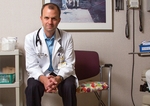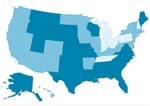health
Recession hitting nation's emergency preparedness abilities
■ Reductions in public health budgets at the federal, state and local levels threaten to further weaken disaster response, a report says.
The country has made significant strides since the 2001 terrorist attacks in the ability of physicians, hospitals, health departments and others to respond to disasters. But that progress is being undermined by government budget cuts, says a report looking at America's preparedness for public health emergencies.
That is the conclusion of the ninth annual report, released Dec. 20, 2011, by Trust for America's Health and the Robert Wood Johnson Foundation, focusing on the potential consequences of looming budget cuts at the federal, state and local levels. The report said those cuts threaten to unravel a decade's worth of progress made bolstering the nation's ability to respond to bioterrorist attacks, disease outbreaks or other disasters.
"The economic crisis has changed the story," said Jeffrey Levi, PhD, executive director of the Trust for America's Health. "The Great Recession is taking its toll on emergency preparedness."
The Centers for Disease Control and Prevention has provided more than $7 billion in preparedness funding to states and cities since Sept. 11, 2001. But the report said that CDC cuts proposed for the fiscal year 2012 federal budget mean 51 of 72 cities are at risk of losing money to support rapid distribution of vaccines and medicines. Twenty-four states could lose CDC money for field office epidemiologists who help respond to disease outbreaks and disasters, and the nation's 10 state labs with the ability to test for chemical threats are in danger of losing their Level 1 status due to the proposed CDC budget reductions.
Proposed federal budget cuts would mean a loss of $72 million to CDC public health emergency preparedness grants between fiscal years 2010 and 2012, said the report (link).
Cuts at the state level
Many states have targeted public health funds in recent years. Nearly 15,000 state health department jobs and 34,400 local health department jobs have been lost to budget cuts since 2008.
Forty states and the District of Columbia have cut public health funds in the past year, the report said. Thirty states cut their budgets for a second year in a row, and 15 have done so for three consecutive years.
Between fiscal 2010 and 2011, 41 states had cuts in preparedness support through the CDC public health emergency and preparedness grants, and all 50 states and the District of Columbia faced reductions in their CDC hospital preparedness program funding.
In Oregon, federal emergency preparedness dollars have helped state officials respond to E. coli outbreaks and the A(H1N1) pandemic, said Mel Kohn, MD, MPH, Oregon's state health officer and the Oregon Health Authority's director of public health. But the state's preparedness funding fell about 11% in 2011.
"If we have another 10% to 11% reduction, it is going to have serious consequences for our ability to respond to an event," he said.
The report recommends that the federal government provide dedicated emergency preparedness funding, such as giving states more flexible, multiyear grants. Other priorities should include modernizing biosurveillance to quickly detect and track bioterrorism attacks or disease outbreaks, improving the country's vaccine research and manufacturing capabilities, and enhancing the ability of the nation's health care system to care for an influx of patients during an emergency.
The CDC did not respond to the report. In the Sept. 3, 2011, issue of The Lancet, Ali S. Khan, MD, MPH, director of CDC's Organization Office of Public Health Preparedness and Response, said the loss of more than 44,000 public health jobs since 2008 threatens the nation's ability to respond to disasters (link).
"Americans expect the public health system to have the capability to competently protect their health during emergencies," Dr. Kohn said. "This is not an optional service. It's about life-and-death circumstances."












